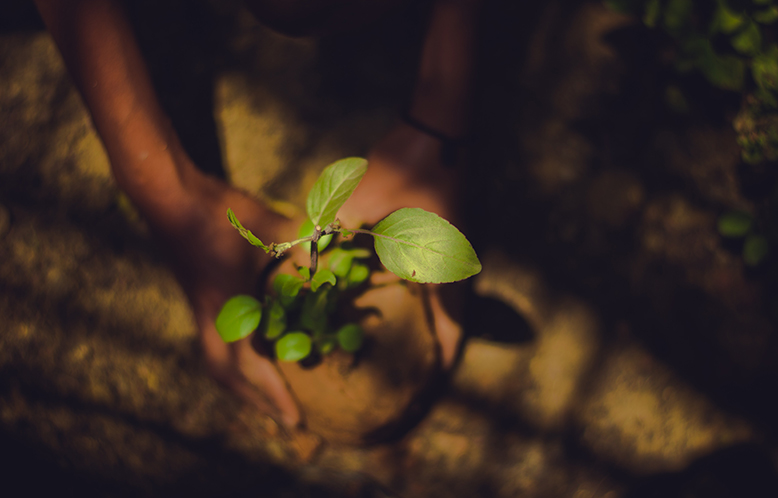
Management Practices to Ensure Good Plant Establishment
When it comes to planting, having everything come out perfect is rare on the first try. One of the worst things that can happen is you putting in so much hard work only for your plant to not establish. Unfortunately, this is something that many people experience. The three most common causes of poor plant establishment or tree death are planting too deep, under watering, and over watering. We gathered tips from our experts to help you practice good plant establishment.
One of the most important keys to plant establishment is plant or tree selection. Picking the right plant will allow for greater longevity in the landscape and less time needed for establishment. First, think of your reasoning for planting. Is it for flowers, to provide shade or windbreak, or to conserve energy? Do you want to grow fruit or nuts? Knowing this will help you pick the right tree for you. If your goal is not to grow fruit or nuts, you do not want to pick a plant that produces those because it will mean more management for you. You will then need to do some research on what hardiness zone you are to learn what types of plants do well in your area. However, do not just look at native plants because that does not guarantee sustainability nor resistance to insects or disease.
When going to pick out your tree, check for good branch spacing, trunk taper, and root flare. Make sure foliage is evenly distributed in the upper ⅔ of the plant. You will want to avoid upright branches and check for mechanical damage like cankers and wounds.
When determining the placement of your tree, you will want to test the pH level of your soil. Soil pH can be an indicator of nutrient availability, and most trees tend to prefer slightly acidic soils. You will also want to check the drainage. To test this, dig your hole and fill it up about halfway with water. Set a timer for 2 hours and if the water is gone, then the soil provides good drainage. The next thing to consider is the size of the tree and the area you want to plant it in. Consider the mature size of the tree above and below the ground. A good rule of thumb is to plant at least 20 feet from the house. Larger trees may need to be planted 40 feet away. Study how much sunlight the area gets; larger canopy trees prefer full sun. Make sure it will not obstruct driveways or walkways. Before you plant, know the maintenance requirements like raking, fruit falling, and moisture requirements.
Follow these step-by-step instructions to ensure proper planting:
Step 1
Dig a shallow and wide planting hole. Start by measuring the distance between top root and bottom of ball or container.
Step 2
Dig hole slightly shallower than that measurement. The root ball needs to be above the soil. Then make the hole at least 1.5 times the diameter of root ball.
Step 3
Find topmost root and treat defects.
Step 4
Place tree in planting hole. Make sure to not lift by the trunk.
Step 5
Position topmost root 1 to 3 inches above the soil line. You may need to plant higher in poorly drained soil.
Step 6
Straighten the tree in the hole. View the tree from two different directions perpendicular from each other to make sure.
Step 7
Remove any synthetic materials.
Step 8
Add backfill and firm the backfill soil. To do this, slice a shovel into the backfill 20-30 times as you add to breakup clumps. Do not pack the backfill. Firmly step soil to stabilize tree. The root ball should remain 1-3 inches above backfill soil. Then add 10-20 gallons of water to ball and backfill.
Step 9
Mulch the planting area. There should be 3 inches of mulch around the tree which a 2-3 foot diameter per inch of caliper (the diameter of a tree when measured 12” above the ground). There should be a very thin layer or none over root ball.
Step 10
Stake and prune if needed.
After the tree is planted, you will need to follow proper maintenance and watering. During establishment, water 2-3 times a week with 1 to 1 ½ gallons per inch trunk caliper. All water should be applied to the root ball.
By practicing these tips, you will find yourself with healthy and established plants. Contact a service provider or one of Arborjet’s Regional Technical Managers if you have any additional questions specific to your area.


Sorry, the comment form is closed at this time.